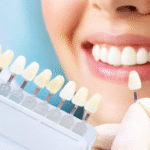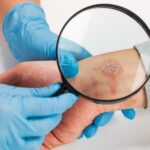
Seeing your child’s smile is priceless. But sometimes, you notice their teeth might need help. An NW Albuquerque dentist can see the signs early. Your family dentist plays a key role in spotting orthodontic needs before they become bigger concerns. They check for misaligned teeth or bite issues during regular visits. Early detection leads to better outcomes. Addressing these needs sooner rather than later can prevent future discomfort. Your dentist guides you through this process with care. They explain what they see simply and clearly. If your child needs more detailed support, they refer you to an orthodontist. This teamwork provides the best plan for your child’s dental health. You stay informed every step of the way. By working together, you and your dentist ensure your child’s smile stays healthy. Regular check-ups are your first line of action. This partnership protects against potential dental issues down the road.
Why Early Detection Matters
Detecting orthodontic needs early can prevent more complex treatments later. When issues like crowding or bite problems are caught early, solutions are simpler and less invasive. For example, early phase orthodontics can guide the growth of the jaw and incoming permanent teeth. This proactive approach reduces the likelihood of tooth extraction or longer treatment durations. According to the American Dental Association, early intervention often leads to better health outcomes.
Common Signs of Orthodontic Needs
Family dentists look for common signs that may indicate the need for orthodontic evaluation. Some of these signs include:
- Crowded or overlapping teeth
- Difficulty in chewing or biting
- Teeth grinding or clenching
- Speech difficulties due to misalignment
- Jaw shifting or clicking sounds
Observing these signs doesn’t mean immediate braces. Instead, they signal the need for a closer look, ensuring your child gets the best care possible.
The Role of Family Dentists
Your family dentist is often your first point of contact for dental concerns. They conduct regular dental check-ups, assessing both teeth and jaw development. During these visits, dentists use simple tools and techniques to evaluate alignment. If potential issues are detected, they discuss options with you. This information empowers you to make informed decisions about your child’s dental care.
Comparison of Early Detection vs. Delayed Treatment
| Early Detection | Delayed Treatment |
|---|---|
| Simpler treatments | More complex procedures |
| Shorter treatment times | Longer, more involved processes |
| Potential cost savings | Higher treatment costs |
| Better long-term outcomes | Possible ongoing issues |
Partnering with an Orthodontist
If your family dentist identifies potential orthodontic needs, they refer you to a specialist. Orthodontists, who focus on correcting misalignments, work closely with your dentist to ensure a seamless care plan. This collaboration means your child receives focused treatment without losing the personal touch of family dental care.
What to Expect During Visits
Regular dental visits involve gentle examinations of your child’s teeth and jaw. The dentist checks for shifts in alignment and assesses the bite. X-rays might be used to see beneath the surface, ensuring no issues are hidden. If the dentist suggests orthodontic care, they explain why and what to expect next.
Empowering Your Child with Knowledge
Understanding dental health empowers both you and your child. Explain in simple terms what the dentist is checking for and why. Encourage questions and express any concerns openly. This understanding fosters trust and helps your child feel more comfortable during visits.
Conclusion
Your family dentist is a trusted partner in your child’s dental health journey. By spotting orthodontic needs early, they help maintain a healthy smile and prevent future complications. Regular check-ups play a crucial role in this process. For more information on maintaining dental health, visit the CDC’s Oral Health page. Working together, you, your child, and your dentist can ensure a future filled with confident smiles.







